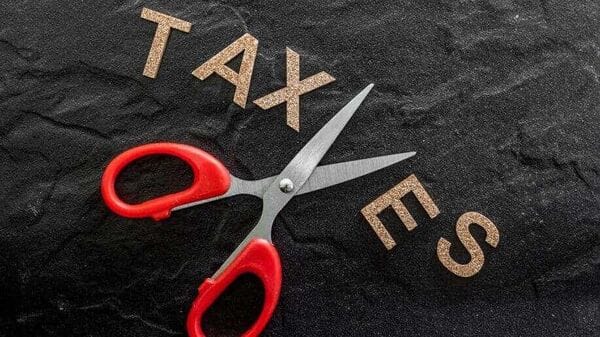
On the personal income tax front, the Hon’ble Finance Minister. Smt Nirmala Sitharaman made 5 major announcements for individuals in Budget 2023. The announcements are under the new tax regime the rebate limit has been hiked to ₹7 lakhs from ₹5 lakhs, reduced number of slabs to five and increased the tax exemption limit to ₹3 lakh under the new tax regime, salaried taxpayers are now eligible for the standard deduction of Rs. 50,000 and a deduction from family pension up to Rs. 15,000 under the new tax regime from FY 2023-24, in the new tax regime, the maximum surcharge rate was reduced from 37 to 25 percent, and the non-government salaried employee leave encashment tax exemption ceiling was raised to ₹25 lakh. However, based on an exclusive interview with experts Aparna Khatri, Consulting Director, Salika Kothari, Senior Manager & Dhaval Shah, Senior Consultant at Rajeshree Sabnavis & Associates, they claim that Budget 2023 has a number of wins and misses on the personal tax front. They said considering the upcoming 2024 General Elections, the odds of the current Budget being a populist one were high. However, the FM exercised restraint and has been cautious in doling out benefits to individual taxpayers. Listed below are the key areas where the FM met the taxpayer expectations and some which were missed.
Revision in the tax regime
The FM joyfully acknowledged that personal income tax was the most awaited tax announcement amongst other announcements. The tax rates/ slabs were modified to benefit the individual taxpayers, but they came with conditions attached. The erstwhile regime under Section 115BAC, provided a differential tax structure with restrictions on specified deductions/ exemptions (New Tax Regime), clearly surfaced as the regime of choice making it the default taxation scheme for individuals (i.e. applicable unless the individual decides to opt for the old regime which taxed income at different tax rates but allowed for deductions).
Simply put, the old regime taxed income under 3 slab rates of 5%-20%-30% with the maximum rate of 30% triggering where income exceeded ₹10 lakhs. However, in such cases, taxable income was computed after reducing sums allowable as deductions like Leave Travel allowance etc, deductions under Section 80 towards eligible investments such as LIC, PPF, interest paid on home loans, to name a few. Further, where the total income of the individual did not exceed ₹500,000, the tax liability was nil.
While the New Tax Regime was applicable from the tax year 2020-21, it found less takers. To plug this, the FM has sweetened the regime by increasing the maximum amount not taxable (from ₹500,000 to ₹700,000) available under this option and tweaking the tax slabs. Accordingly, the tax rates under the New Tax regime stand revised as under:
View Full Image
While the New Tax regime, seems attractive, it would call for an evaluation of comparative benefits depending on the deductions available, which are tagged along with his/her financial planning goals (e.g. predefined sums invested in PPF, medical insurance premium) and his/her financial commitments (e.g. annual LIC policy premium, home loan principal/ interest repayment etc). The following case study would help understand this better:

View Full Image
Thus, in the instant case, the taxpayer would be benefited by not opting for the New Tax Regime. Further, the New Tax regime intends to provide tax benefits, both in terms of lower tax outflow and ease of compliance (in terms of removing the need for making investments/ claiming allowances etc).
Other key announcements
Certain other announcements made by the FM, which would impact the individual taxpayers are captured below:
1. Rationalisation of maximum marginal rate (MMR): Highest surcharge rate is proposed to be capped at 25% from an existing rate of 37%, lowering the overall maximum marginal rate from ~42% to ~39%.
2. Increasing threshold limit for presumptive taxation scheme: in case of eligible businesses from a turnover of ₹2 crores to 3 crores and in case of professionals from turnover of ₹50 lakhs to ₹75 lakhs, provided cash receipts do not exceed 5% of receipts/ turnover.
3. Eliminating double deduction of interest on borrowed capital: It is proposed that cost of acquisition/ of improvement to not include interest claimed on borrowed capital where deduction already claimed under Section 24/ Chapter VIA.
4. Extending deeming provision to gift to ‘not ordinarily resident’: Gifts (money given without consideration) aggregating to more than ₹50,000, received by a person not ordinarily resident in India from a person resident in India now taxable in India under Section 56(2)(x).
5. In recent times, there has been a rise in the users of online games. New Section 194BA is being introduced w.e.f July 1, 2023 providing for deduction of tax at source on winning income from online games, exceeding ₹10,000.
6. Income from high value insurance policies (having premium paid above ₹5 lakhs in a year) to be taxable as income from other sources. However, even in such cases, income exempt if sum is received in death of insured person.
7. Deduction of investments made under Section 54/54F against income from capital gains to be capped at ₹10 crores.
8. Increase in TCS rate on foreign remittance and foreign travel: effective July 1, 2023, tax collection at source rates are significantly increased from 5% to 20% on selling overseas tour package and on LRS remittance except for remittance for specified education or medical treatment.
Parting thoughts
While the simplification of the overall tax structure is a welcome move, the objective of increased disposable income in the hands of the people at the bottom of the pyramid coupled with increase in Government spend over skilling India and fostering entrepreneurship is a welcome move.
Disclaimer: The views and recommendations made above are those of individual analysts or broking companies, and not of Mint.

